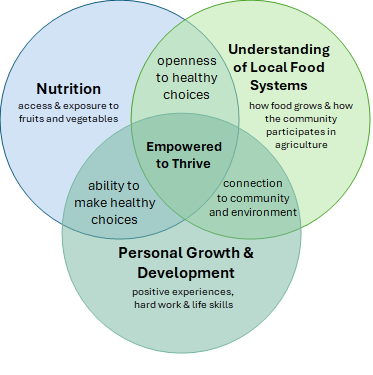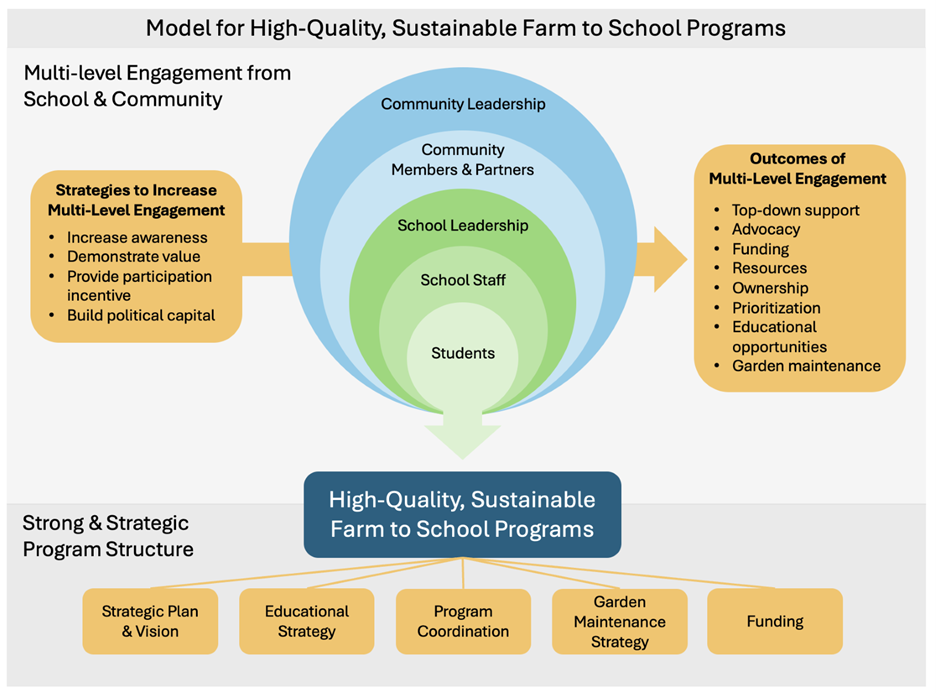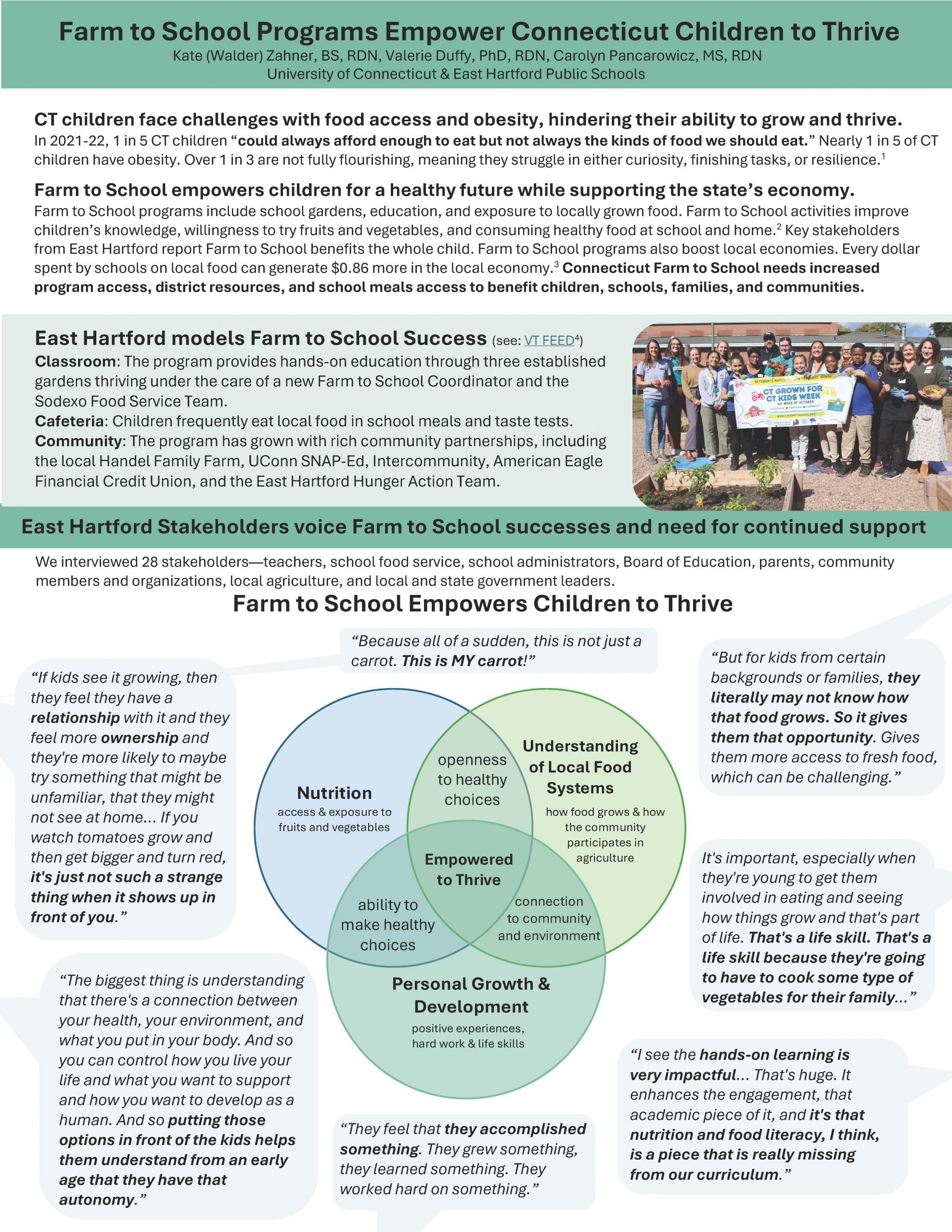What Is Farm to School?
Farm to School programs use gardens, hands-on education, and exposure to locally grown food to teach children how food grows. Farm to School can be described through the “three C’s” of Farm to School: classroom, cafeteria, and community.*
Classroom: Children get hands-on experiences around growing and cooking food.
Cafeteria: Local items are served in school meals and taste tests, exposing children to fresh and nutritious food.
Community: Involvement of community partners and members support the program’s growth and allow children to connect with local farmers.
Why Farm to School?
Farm to School programs have been associated with many benefits for both children and communities. The positive impact of FTS ranges from child nutrition, school engagement, academic achievement, supporting food security, boosting local economies and farmers, and reducing environmental impact of transportation.
Our Work in Farm to School
UConn Healthy Family CT supports schools to develop and sustain Farm to School programs. We partnered with East Hartford Farm to School to interview 30 East Hartford stakeholders (teachers, school food service staff, school administrators, Board of Education, parents, community members and organizations, local agriculture, and local and state government leaders) and explored the value of Farm to School and strategies to sustain programs long term.
Reach out to healthyfamilyct@uconn.edu to learn more and partner with us!
Research Findings from Study in East Hartford
We heard that Farm to School supports child nutrition, personal growth and development, and understanding of local food systems.

We also heard that multi-level engagement from the school and community with strong program structure is essential to sustain programs long term.

Resources
Farm to School Programs Empower Connecticut Children to Thrive
read the Farm to School Policy Brief
